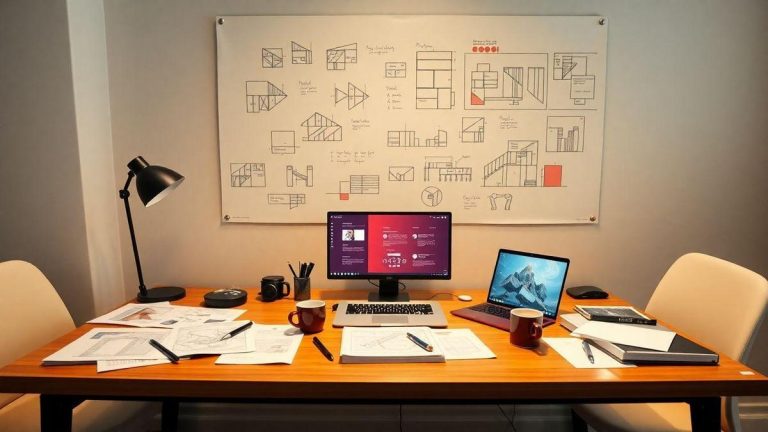How to Maintain Consistency in Parallel Programming Projects
How to Maintain Consistency in Parallel Programming Projects is the topic I'm going to unravel with you. You know, programming is like juggling oranges, while trying not to let any of them slip and fall to the floor. I'll tell you how I managed to keep my code tidy, my time managed like a superhero, and avoid the monster of procrastination that lurks around every corner. So, buckle up and get ready for a fun ride through the world of programming!
The Importance of Consistency in Parallel Programming Projects
What is Consistency in Programming?
When I speak of consistency In programming, I'm referring to the ability to maintain a standard in everything I do. This means that, whether it's the code I write or my problem-solving approaches, I try to be like that friend who never forgets everyone's birthday. You know? Always there, always reliable!
Why is Consistency Key?
Consistency is key because it helps to avoid confusionImagine you're trying to bake a cake and, instead of following the recipe, you decide to throw in a little bit of everything you have in the fridge. The result could be delicious or a complete disaster! In the world of programming, consistency is what ensures my code runs like a well-oiled machine. Here are a few reasons why this is so important:
- Facilitates Collaboration: If my colleagues and I follow the same standards, it becomes easier to understand what each of us did.
- Reduces Errors: When I am consistent, mistakes become easier to identify and correct.
- Increases Efficiency: Consistent code is faster to write and easier to maintain.
Consistency and My Code: A Love Story
Ah, consistency and I have a very special relationship! I remember one time I was working on a side project. I was so excited that I started mixing coding styles like I was making a fruit salad. The result? Code so confusing it looked like a thousand-piece puzzle without the picture on the box!
After much laughter (and a few tears), I realized I needed to establish a pattern. I created a simple chart to help me keep everything in order:
| Element | Standard |
|---|---|
| Variable Names | camelCase |
| Functions | verbAtStart (e.g. calculateTotal) |
| Comments | Explanatory and in Portuguese |
Since then, my programming life has become much easier. Consistency has become my best friend, and my code has become more readable and less maze-like.
Time Management: My Superpower
Ah, the time management! If I had a dollar for every time I've heard that phrase, I'd probably have enough money to hire someone to manage my time! But, all jokes aside, I've discovered that with a few techniques, I can be more productive and still have time to watch cat videos. Let's go!
Time Management Techniques I Use
Here are some techniques I use to avoid getting lost in time like a broken GPS:
- Pomodoro: I work for 25 minutes and then take a 5 minute break. It's like a marathon, but without the sweat!
- To-Do List: I write down everything I need to do. If it's not written down, it's as if it doesn't exist. And I've already missed some important tasks that way!
- Priorities: I order the tasks. What's most urgent? What can wait? This helps me avoid feeling like a dizzy cockroach.
How to Avoid the Procrastination Trap
Procrastination is like an annoying friend who won't leave. To get rid of it, I do the following:
- I divide the tasks: Instead of looking at one giant project, I break it down into bite-sized pieces. This makes it seem easier, like eating a cake in slices!
- Rewards: I give myself little rewards. If I complete a task, I watch an episode of my favorite show. It's like a reward for being an adult!
- Clean Environment: I keep my workspace organized. A messy place is like a maze, and I'm not the Minotaur.
My Schedule: What Works and What Doesn't
| Technique | Does it work? | Notes |
|---|---|---|
| Pomodoro | Yes | Helps maintain focus |
| To-Do List | Yes | I don't forget anything |
| Priorities | Yes | Focus on what really matters |
| Procrastination | No | Always appears when I least expect it |
Productivity in Programming Projects: The Secret Revealed
Tools that Increase My Productivity
When it comes to programming productivity, I'm like a cat on a keyboard: always trying to find the best spot to perch! Here are some tools that really turbocharge my work:
- Trello: To organize my tasks. It's like a bulletin board, but digital!
- Slack: For quick communication. I feel like a superhero, saving the day with instant messaging.
- Visual Studio Code: My favorite code editor. It's like having a magic wand that turns my code into something functional!
| Tool | Function |
|---|---|
| Trello | Task organization |
| Slack | Team communication |
| Visual Studio Code | Code editing |
How Focus is Essential for Productivity
Focus is my best friend, and sometimes it feels like it's on vacation! To stay productive, I follow these tips:
- Turn off notifications: It's like putting earplugs in my ears. I don't need to know who liked my friend's Instagram photo while I'm coding!
- Create a peaceful environment: A clean and organized space helps keep my mind clear. And, of course, a cup of coffee by my side!
- Use the Pomodoro Technique: I work for 25 minutes and then take a break. It's like slapping my brain on the back and saying, "Good job, now breathe!"
My Work Routine: What I Do to Be Productive
My routine is like a cake recipe: if I don't follow the steps, everything falls apart! Here's what I do:
- I wake up early: Because the sun waits for no one, and I don't want to waste time either!
- I plan my day: I make a to-do list. It's like a treasure map, where the treasure is productivity!
- Block work: I do one task at a time. Trying to do everything at once is like trying to balance plates—at some point, everything falls over!
At the end of the day, I ask myself: How to Maintain Consistency in Parallel Programming Projects? The answer is simple: discipline and organizationIf I can stay focused and use the right tools, I'm on the right path to success!
Task Organization: The Method that Saves My Day
How I Organize My Side Projects
Ah, the art of organize side projects! If you asked me a few months ago, I would have said it was like trying to put together a jigsaw puzzle while a hurricane was raging through the room. But now, I have a method that works like a magic spell! It all starts with a simple notebook and a pen. Yes, I know, it sounds retro. But believe me, writing by hand helps me... fix the ideas.
Here's my step-by-step guide:
- Brainstorming: I write down everything that's in my head. Crazy ideas, projects I want to do, even my shopping list!
- Prioritization: I make a list and put a number next to each item. That way, I know what's most important.
- Division of Tasks: I break down big projects into small tasks. It's easier to tackle a piece of cake than a whole cake, right?
To-Do Lists: Friend or Foe?
To-do lists are like that friend who pushes you into the pool: you may love them or hate them, but in the end, you dive in! For me, they are friends. But, of course, there are days when they seem more like a curse.
A well-made list can be the difference between a productive day and one where I only watch cat videos. Here are some tips on how I use lists:
- Be realistic: Don't put 20 tasks in one day. The maximum is 5!
- Use colors: Yes, I'm one of those people who loves colored pens. Each color represents a category, like work, studies, and social life.
- Review: At the end of the day, I look at my list. If I didn't do something, no problem! I put it off until the next day.
The Power of Lists: How They Changed My Life
To-do lists have changed my life, and that's no exaggeration! Before, I was a disaster traveling, forgetting deadlines and wasting time on things that didn't matter. Now, with a simple list, I can:
| What I won | How does this help me? |
|---|---|
| Less stress | Focus on tasks |
| More free time | Organize better |
| Satisfaction | Complete tasks |
So, if you're not already friends with lists, it's time to give them a try! They could be your new best friend. fight against procrastination.
Efficient Programming Techniques: What I Learned
Agile Working Methods I Use
When I first started programming, I felt like a cat trying to catch a laser: running in circles and not knowing where to go. But over time, I discovered that work in an agile way It's like having a treasure map. One of the methods I use is Scrum. Basically, it's like running a marathon, but instead of running, you're delivering small chunks of your project.
Here are some things I learned:
- Sprints: Work in short cycles. It's like sprinting to the fridge and back, but with code.
- Daily Meetings: Chat with the team every day. It's like a virtual breakfast, but without the pancakes.
- Revisions: Look at what you've done. Think of it like looking at your vacation photos and realizing you really need a new hairstyle.
Programming Tips That Increase My Efficiency
Now, let's get to the tips that really helped me increase my efficiencyBecause, let's be honest, programming can be like trying to understand the lyrics of a song in another language. Here are some tips:
- Use comments: They're like post-its on your screen. They help you remember what you were thinking.
- Organize your code: A messy code is like a messy room. No one wants to look for a lost sock in the middle of it all.
- Learn how to use a debugger: It's like having a superpower. You can see what's wrong without having to guess.
Efficient Programming: What Works for Me
For me, the efficient programming It's like a cake recipe. If you don't follow the steps, the cake won't rise. Here's what works for me:
| Technique | Description |
|---|---|
| Divide tasks | I do small parts at a time. |
| Prioritize | First things first. |
| Focus | I turn off notifications. Fewer distractions. |
With these techniques, I feel like I'm always one step ahead. And, believe me, it makes all the difference!
Balancing Programming Projects: The Art of Not Freaking Out
How to Maintain Balance in Side Projects
When it comes to programming, I feel like a juggler in a circus: one project in hand, another on my feet, and if I'm not careful, I could end up dropping everything! So how do I maintain balance amidst so many tasks? Here are some tips that work for me:
- Prioritize your tasks: Make a list of your tasks and define what's most important. This will help you avoid getting lost along the way.
- Set realistic deadlines: I'm not a superhero, and neither should you be. Give yourself enough time to complete each project without stressing yourself out.
- Take breaks: Sometimes all we need is a coffee and some fresh air. Get out, breathe, and come back refreshed!
My Experience with Stress and Programming
Ah, stress! It's like that annoying friend who shows up uninvited. One time, I was so swamped with projects that I decided to work until the wee hours of the morning. Result? I looked like a zombie! So, I learned that stress isn't a programmer's best friend. Here are some things I did to deal with it:
- Meditation: Yes, I'm that guy who meditates. And guess what? It works! I dedicate 10 minutes of my day to relaxing my mind.
- Exercises: A brisk walk or exercise session helps release tension. And, as a bonus, I get fitter!
- Chat with friends: Laughing and venting with friends is a great way to relieve pressure. They always have a funny story to tell!
Balance is Key: How I Find My Center
For me, balance is everything. If I don't take care of myself, how will I take care of my projects? Here are some strategies I use to find my center:
| Strategy | What do I do? |
|---|---|
| Routine | I set fixed times for work and rest. |
| Hobbies | I dedicate time to hobbies that make me happy, like playing the guitar. |
| Reflection | I review my projects weekly and adjust whatever is necessary. |
In the end, maintain consistency in parallel programming projects It's a matter of balance and self-care. If I'm not feeling well, nothing else will work. So remember: laughing, relaxing, and prioritizing are the keys to not going crazy!







